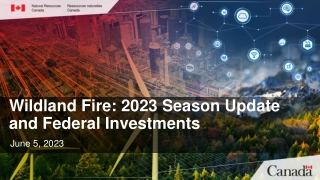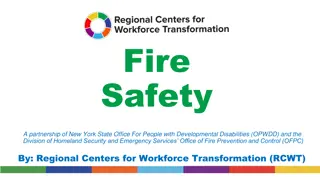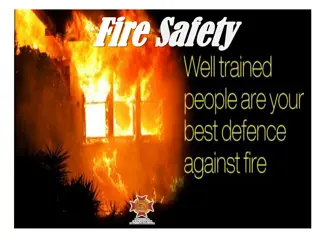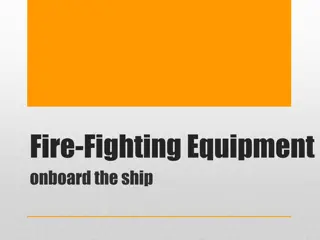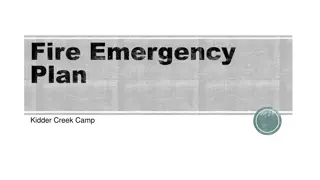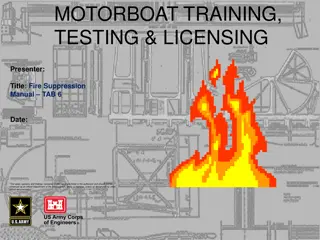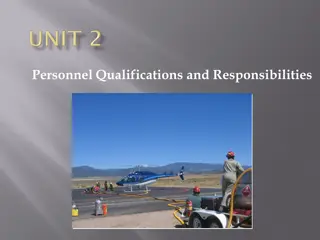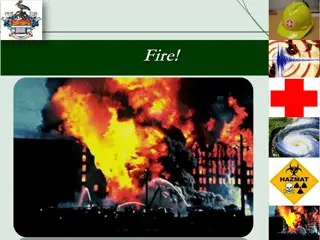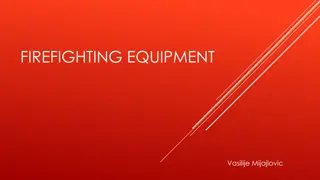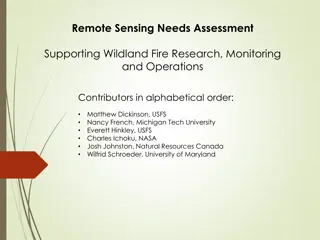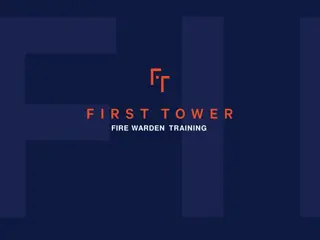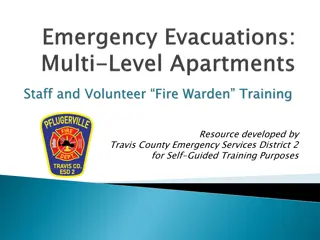
Concerns and Recommendations on Wildland Fire Management
Throughout over 20 years, various government agencies and stakeholders have expressed concerns regarding the management of wildland fires. Issues include funds diversion, policy differences, lack of cohesive strategy, and stakeholder involvement. Recommendations involve the development of a comprehensive strategy, effective resource allocation, reinvestment in non-fire programs, assessing risks, prioritizing fuel reduction projects, addressing climate change impacts, and studying invasive species effects.
Download Presentation

Please find below an Image/Link to download the presentation.
The content on the website is provided AS IS for your information and personal use only. It may not be sold, licensed, or shared on other websites without obtaining consent from the author. If you encounter any issues during the download, it is possible that the publisher has removed the file from their server.
You are allowed to download the files provided on this website for personal or commercial use, subject to the condition that they are used lawfully. All files are the property of their respective owners.
The content on the website is provided AS IS for your information and personal use only. It may not be sold, licensed, or shared on other websites without obtaining consent from the author.
E N D
Presentation Transcript
For over 20 years, the Government Accountability Office, Office of Management and Budgets, Congress, a variety of stakeholders and various administrations have expressed concerns related to wildland fire management.
Ever larger portions of public funds being diverted to fire suppression efforts Difference in policies and varied approaches to the same problems Lack of consistent and transparent prioritization process for the allocation of fire funding
Lack of a cohesive fire management strategy Critical stakeholders were not a key component of previous efforts
2009 Federal Land Assistance, Management and Enhancement Act (FLAME)
Direct the Development of a Cohesive Strategy The identification of the most cost effective means for allocating fire management budget resources II. The reinvestment in non-fire programs by the Secretary of the Interior and the Secretary of Agriculture III. Employing the most appropriate management response to wildfires I.
Direct the Development of a Cohesive Strategy IV. Assessing and addressing the level of risks to communities V. The allocation of hazardous fuels reduction funds based on the priority of hazardous fuels reduction projects VI. Assessing and addressing the impacts of climate change on the frequency and severity of wildfire VII. Studying the effects of invasive species on wildfire risk
1995 Federal Fire Policy National Fire Plan 10 Year Comprehensive Strategy Two recent Quadrennial Fire Reviews
Nationally Decision making includes all stakeholders This is an all lands, all hands effort Broad stakeholder participation is critical to success
Goal One: Healthy and Resilient Landscapes Enhance opportunities for local, collaborative efforts Local economic-based opportunities Fully use existing policy and authorities Responsibility resides with all stakeholders at all levels
Goal Two: Fire Adapted Communities Fire Adapted Communities are broader than just the Wildland Urban Interface Prioritize and support active community driven efforts Use education and incentives to ensure maximum participation Responsibility resides with all stakeholders at all levels
Goal Three: Fire Response Provide for safety of firefighters and the public Collaborative effort to determine approach to risk and values at the local level Improve the effectiveness and efficiency of the wildland fire management organization Responsibility resides with all stakeholders at all levels
Actions Step B Linkages Contributing Factors Step A Characterize Risk Risk Step C Step D Specific Alternatives Step E More Complete Analysis: Quantitative, Qualitative local contribution, costs, external drivers, climate Step F Synthesize and Report Exploratory Analysis > Opportunities/Barriers
A collaborative environment where everyone engaged and affected by wildfire: Works toward common goals Is aware of wildland fire risks and opportunities to address risks Makes decisions with compatible-cohesive information Contributes to reducing risks
A policy environment that: Recognizes opportunities to reduce risk Rewards successful efforts to reduce risk Recognizes barriers that prevent achieving common goals Chips away at the barriers - an iterative process with adaptive learning
A science environment that enhances multi-scale understanding of: Wildfire risks to important values Opportunities to reduce risk Trade-offs among options intended to reduce risks
A decision making environment where: Complementary decisions are possible among agencies and organizations at all scales - local, regional and national Risks are reduced and managed Three broad common goals influence outcomes
Southeastern Regional Strategy Committee http://sites.nemac.org/southeastcohesivefire/ Northeastern Regional Strategy Committee http://sites.nemac.org/northeastcohesivefire/ Western Regional Strategy Committee http://sites.nemac.org/westcohesivefire/

